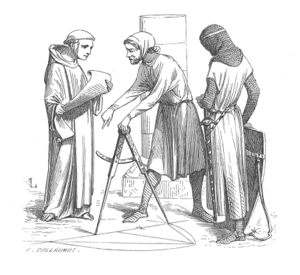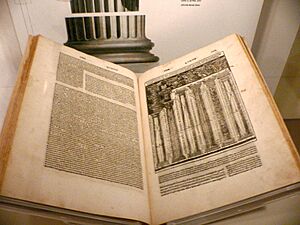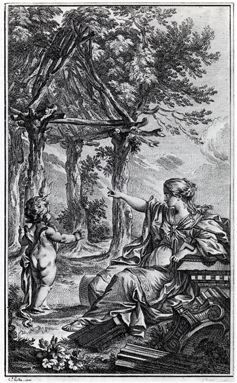Architectural theory facts for kids

Architectural theory is all about thinking, talking, and writing about architecture. It's a big part of what architects learn in school. Top architects around the world also use it in their work.
Architectural theory can show up in many ways. It can be a lecture or a discussion. It can be a book or a detailed paper. Sometimes, it's even part of a design competition.
Architectural theory often aims to teach. People who study it usually work closely with schools. This way of thinking about buildings has been around since ancient times. As more books were published, architectural theory grew richer. In the 20th century, many works by architects and critics were printed. This led to new styles forming and changing very quickly. The internet will likely make these discussions even faster in the 21st century.
Contents
History of Architectural Ideas
Ancient Times
Rome
We don't have much information about early architectural theory from ancient times. The most important work we know of is from the 1st century BC by Vitruvius. This doesn't mean other works didn't exist, but many were lost over time.
Vitruvius was a Roman writer, architect, and engineer. He lived in the 1st century BC. He wrote De architectura, also known as The Ten Books of Architecture. This book was written in Latin and Greek. He dedicated it to Emperor Augustus.
Written around 27 to 23 BC, it's the only major book from that time about classical architecture that we still have. It has ten parts, or "books." It covers almost everything about Roman architecture. This includes town planning, building materials, decorations, temples, and water systems. It also clearly explains the classical orders of architecture.
Vitruvius also shared three main rules that good architecture must follow. These are firmitas, utilitas, venustas. In the 17th century, Sir Henry Wotton translated these into English as firmness, commodity and delight. This means a building should be strong, useful, and beautiful.
When Vitruvius's work was found again in 1414, it greatly influenced architects of the Renaissance. It helped explain why the Renaissance style was becoming popular. Architects like Brunelleschi and Leon Battista Alberti used De architectura to show that architecture was a scientific field.
Ancient India
Vastu shastra (vāstu śāstra) means "science of architecture" in India. These are old Indian texts about traditional building systems. They explain how to design, plan, measure, and arrange spaces. These designs try to connect buildings with nature. They also use geometric patterns (yantra), balance, and directions.
Vastu Shastra texts are part of Vastu Vidya. This is a wider knowledge of ancient Indian architecture and design. Varahamihira's Brihat Samhita, from about the sixth century CE, is one of the oldest Indian texts with chapters on architecture. For example, Chapter 53 talks about "On architecture." It discusses planning cities and buildings, house structures, and balconies. Other old Vastu shastra books include Manasara.
Middle Ages
Following the Vastu shastra tradition, many scholars wrote about architecture in the Middle Ages. These include Manushyalaya Chandrika about home building. There was also Samrangana Sutradhara by Bhoja of Dhar. This was a poetic book on classical Indian architecture.
During the Middle Ages, building knowledge was mostly passed down by copying texts or by word of mouth. Master builders also taught their skills. Copying books was very hard work back then. So, few architectural theories were written down. Most books from this time were about religion, like copies of the Bible. Architectural theories were less often copied.
However, some important architectural writings did appear. The Abbot Suger's Liber de rebus in administratione sua gestis came out with Gothic architecture. Another was Villard de Honnecourt's collection of drawings from around the 1230s.
In Song Dynasty China, Li Jie published the Yingzao Fashi in 1103. This book was an architectural guide that explained how to build in Chinese architecture.
Renaissance
The first major book on architectural theory in this period was De re aedificatoria by Leon Battista Alberti. It put Vitruvius's ideas at the center of modern architectural thinking. Alberti believed good architecture followed Vitruvius's three rules: strength, usefulness, and beauty. These rules were important until the 19th century.
Later, in the 17th century, the architect and mathematician Girard Desargues helped move ideas forward. His studies on shapes, perspective, and geometry were very important.
Enlightenment
The Age of Enlightenment saw many new ideas in architectural theory in Europe. New discoveries, like the ancient cities of Pompeii and Herculaneum, made people more interested in classical art and buildings.
This led to neoclassicism. This term describes 18th-century architecture that took inspiration from these new classical examples. Important thinkers of this time included Marc-Antoine Laugier and Giovanni Battista Piranesi.
19th Century
A strong interest in Neoclassicism continued from the Enlightenment. It focused on classical ideas, simple forms, and a "return to Nature."
However, people soon started to react against neoclassical architecture. In the 1820s, Augustus Pugin gave reasons for why Gothic Revival architecture was good. In the 1840s, John Ruskin further developed these ideas.
The American sculptor Horatio Greenough wrote an essay in 1843 called "American Architecture." He said that copying old building styles was not good. He explained how a building's design should fit its purpose. These ideas helped lead to Functionalism in modern architecture.
Towards the end of the century, many new theories appeared. In England, Ruskin's ideas helped start the Arts and Crafts movement. William Morris was a key writer for this movement. This then influenced Art Nouveau in the UK, seen in the work of Charles Rennie Mackintosh. It also affected the Vienna Secession.
In Europe, the ideas of Viollet-le-Duc and Gottfried Semper sparked new ways of thinking about architecture. They focused on new designs and how to update building styles. Semper especially gained many followers in different countries. His ideas combined history with detailed methods. Many architects of this time were interested in Semper's idea of Realismus, or architectural realism. Some of these were Otto Wagner and Richard Streiter.
20th Century
In 1889, Camillo Sitte published City Planning According to Artistic Principles. This book looked at the beauty of city spaces, inspired by medieval and Baroque town planning. It had a big impact on architecture and city planning. Sitte believed the quality of the spaces between buildings was more important than the buildings themselves.
The Modern Movement later rejected Sitte's ideas. But post-modern architects rediscovered his work in the 1970s.
Also, Louis Sullivan wrote "The Tall Office Building Artistically Considered" in 1896. In this essay, he wrote his famous phrase: "form ever follows function." This idea later became a main rule of Modern architectural theory. While later architects shortened it to "form follows function," Sullivan meant that a building's shape should come from its natural purpose, like in biology. Another important planner was Ebenezer Howard. He started the garden city movement. This movement aimed to build communities with Arts and Crafts style homes.
In Vienna, many thinkers supported a new modern architecture. Otto Wagner used the term modern architecture in his book. He showed his own work and taught his students. Soon after, Adolf Loos wrote Ornament and Crime. He called for "the elimination of ornament." This idea, along with "form follows function," became key principles of the Modern Movement. This movement became very popular in the mid-20th century.
Architects like Walter Gropius, Ludwig Mies van der Rohe, and Le Corbusier created the ideas for the International Style. They wanted to use industrial building methods to change society. Frank Lloyd Wright was also modern because he didn't copy old styles. But his ideas were unique. He wrote a lot about his theories. Wright didn't follow the International Style. He wanted to create an American style, different from European ideas. His style was very personal, based on his views of people and nature.
Towards the end of the century, postmodern architecture reacted against the strict rules of the International Style. They felt it was too narrow and rigid.
Contemporary Ideas
Today, architectural theory looks at how architecture fits into culture and thought. University courses on architectural theory often discuss philosophy and cultural studies. Advanced research also connects architecture with philosophical ideas.
Some theorists, like Peter Eisenman and Bernard Tschumi, are interested in the ideas of philosophers like Derrida. Others, like Anthony Vidler, look at the works of Freud and Lacan. Educators like Dalibor Vesely and Alberto-Perez Gomez also focus on philosophy. More recently, new theorists like Jeffrey Kipnis and Sanford Kwinter have continued this trend.
Some modern architects are also interested in philosophy. Some study phenomenology and neuroaesthetics, like Sarah Williams Goldhagen. Others, like Beatriz Colomina, explore how smaller ideas have shaped architecture over time. The idea that theory involves critique also came from literary studies. Theorists like Mark Wigley compare architecture to a language that can be invented each time it's used. This idea influenced "deconstructivist architecture."
In contrast, some people in the tech world like Christopher Alexander's ideas. He focused on "The Timeless Way of Building" (1979). This book talks about "pattern languages" that are improved during construction.
Since 2000, architectural theory has also dealt with the fast growth of cities and globalization. By understanding cities in new ways, theorists like Rem Koolhaas developed new ideas about urban life. Interests in broken forms and temporary buildings also influenced thinking. This included using high technology. It also connected to wider issues like ecology, mass media, and economics.
In the last ten years, "Digital" Architecture has grown quickly. Many design methods are being developed at the same time. One trend is Biomimicry. This means looking at nature's models and systems to get ideas for solving human problems. Architects also design buildings that look organic. Another trend is using computer methods based on biological processes, called Digital morphogenesis.
To use Computational creativity in architecture, Genetic algorithms from computer science are used. These help create designs on a computer. Some of these designs are even built as real structures. Many theorists and architects are working on these ideas. For example, Patrick Schumacher developed "Parametricism."
Today, architectural theory is very diverse. There are different main schools of thought. These are based on language analysis, philosophy, or cultural theory. For example, there's new interest in postmodern ideas. There's also focus on new radical architecture and its effect on cities. It's too early to tell which of these new ideas will have a lasting impact.
More recently, architectural theory has started to look at social reproduction theory and care ethics. This approach is seen in books edited by Doina Petrescu and Kim Trogal, and by Angelika Fitz and Elke Krasny.
Some Architectural Thinkers
Historical
Formalism and space
Modernist
|
Postmodern and contemporary
|
Digital architecture
Postdigital architecture
Anti-architecture
|
See also
 In Spanish: Teoría de la arquitectura para niños
In Spanish: Teoría de la arquitectura para niños
- Vastu shastra
- Phenomenology (architecture)




